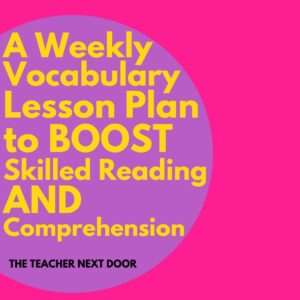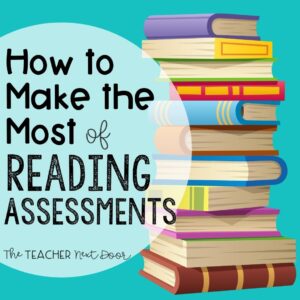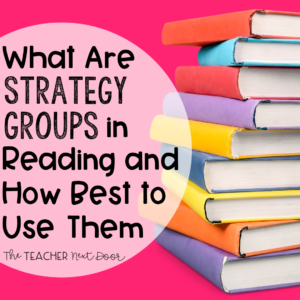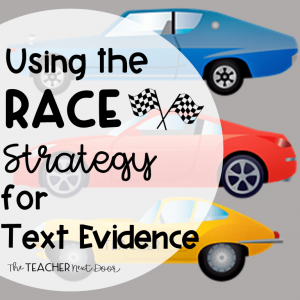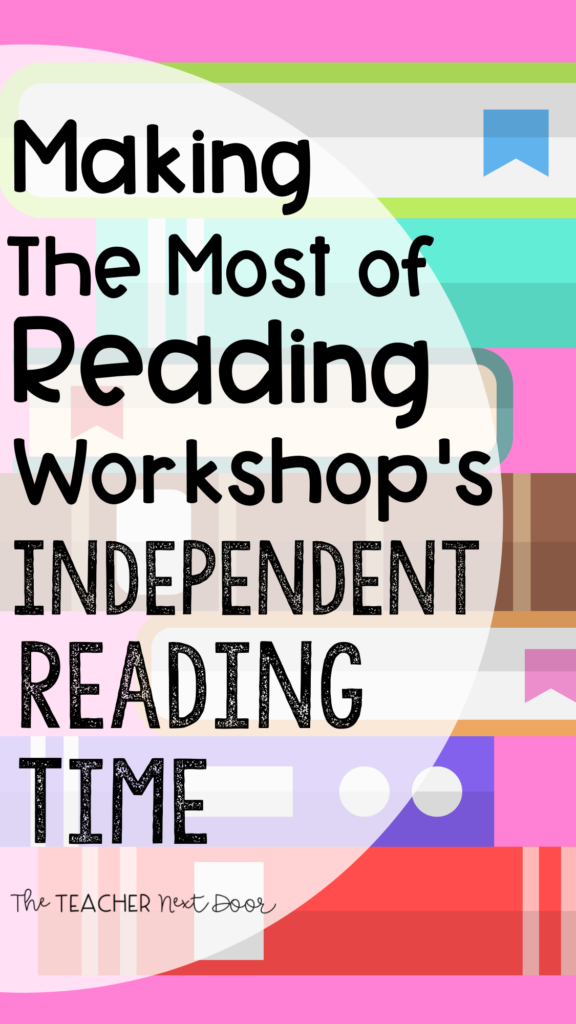
My very favorite part of Reading Workshop is the independent reading component!
To me, spending time reading books and practicing skills we’ve been working on is what reading time should mostly be about! It is the heart of the reading program, if you asked me!
There are so many benefits to making independent reading time a non-negotiable in your reading block:
- Encourages students to develop a love of reading
- Helps to create a classroom culture of reading
- Give students opportunities to practice focusing with a quiet, calm atmosphere
- Allows students to practice a specific reading strategy or skill each day
- Provides a consistent reading routine which many students do not have at home
What are some things to consider when you plan for independent reading time?
1. Gather a good selection of appealing books.
The first thing I did when I became a fifth grade teacher years ago was to focus on building a strong classroom library. I knew that a classroom full of baskets of good books was the first step to enticing my upper elementary students to read.
This doesn’t mean you have to break the bank to buy books. There are so many ways to obtain them for free or at least on the cheap!
I wrote about how I accomplished this in Building Your Upper Elementary Classroom Library if this is something you’re still needing to do.
Also, know that if you have a solid school library, you can always grab books to borrow from there.
The point is that students have such a range of tastes and abilities that having a big selection of books makes the independent reading process much easier.
2. Organize your classroom library and teach students how to use it.
I like to use a sticker system to label each book and to pop it into a basket with a label that has the same, matching sticker.
This method isn’t perfect (what’s perfect in teaching, right?) but it works really well.
One of the first mini-lessons we do to launch reading workshop is to learn about how the classroom library is organized and to practice finding books and putting them away properly.
If this system fails and we end up with a messy library, some of my fast finishers come to the rescue! I love it when those kiddos ask if there’s anything they can do to help! I put them to work checking our library.
3. Decide where you want students to read.
Some teachers like to have students stay at their desks or tables for Reading Workshop.
Some teachers designate reading spots for students and rotate those spots by helper chart or by a student’s written request.
Others allow them to read anywhere in the classroom as long as it’s a “wise” spot for them and not in a place where they’ll be easily distracted.
Where students read is completely up to you, of course. Sometimes your preferences may change depending upon the make-up of the class in a particular year.
4. Directly teach rules and expectations for independent reading time.
Like everything we do in the classroom, without strong routines and procedures in place, chaos is likely to occur!
Make sure one of your first mini-lessons when you launch Reading Workshop is about what should and shouldn’t happen during independent reading time.
This lesson is one that may need to be revisited throughout the year.
What happens during the actual independent reading time?
Right after the mini-lesson, students go to their reading spots and should immediately start reading.
Most of the reading time will be spent reading and (hopefully) practicing the reading strategies and skills you’ve been teaching.
The amount of time spent silently reading will vary according to your reading block schedule but a good goal would be at least 20 solid minutes at minimum up to 30 – 45 ideally, depending upon your class and your schedule.
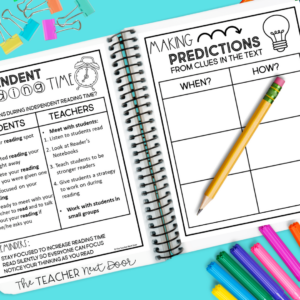
Your students may spend some of that time writing about their thinking as a reader. They may write independently in their Reader’s Notebook.
They may jot down notes on a sticky note (love these but they are so expensive), on a graphic organizer, or they may write directly in their reader’s notebooks.
Occasionally you might assign some type of reading response. You’ll want to keep the main focus though on time spent reading for the majority of the time.
What about Reading Conferences?
While each student is reading, you’ll want to meet with a few students one to one for some individualized instruction time.
During these reading conferences you’ll listen to the student read and give her/him specific reading strategies to encourage growth as a reader.
You also might meet with small groups or strategy groups while the rest of the class is spending time reading.
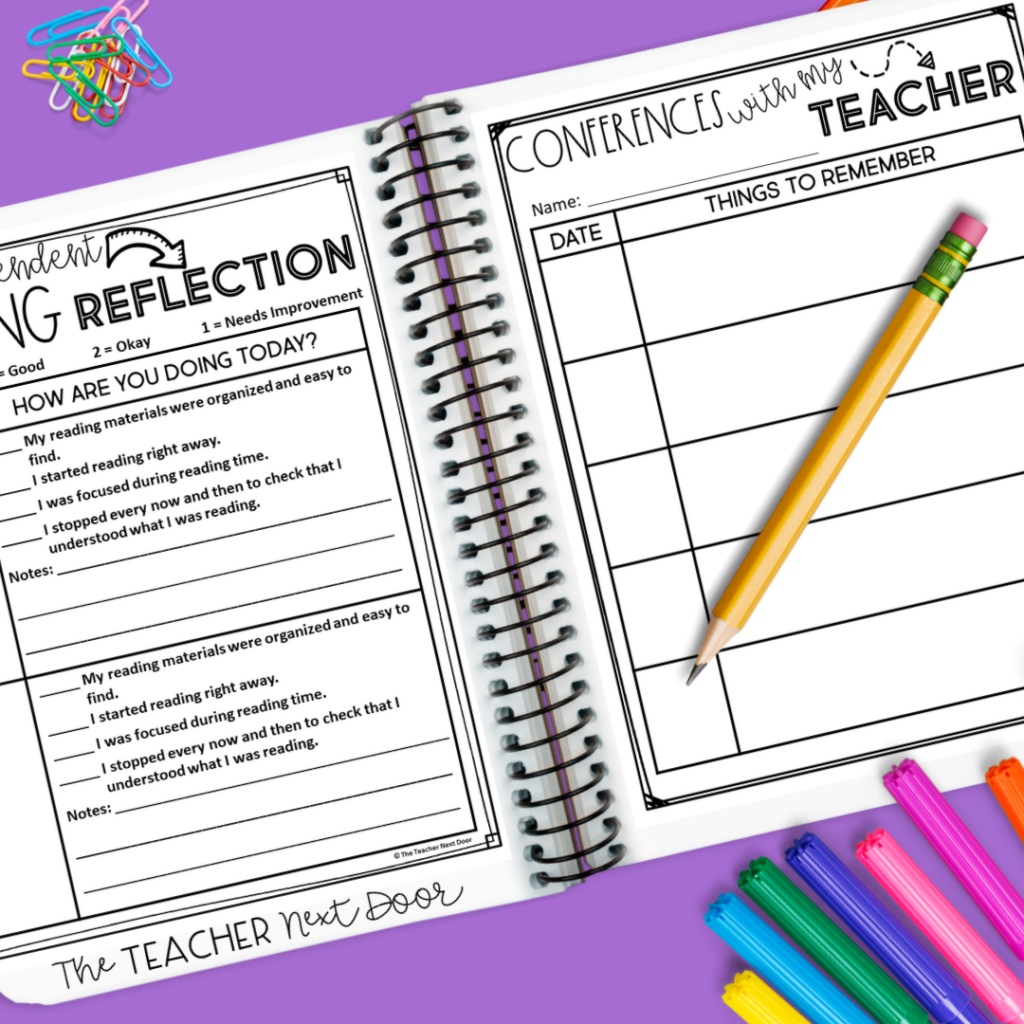
That’s it! Now you know all about how independent reading works using the Reading Workshop model!
Do remember that like everything, becoming an expert at teaching Reading Workshop takes lots of time, patience, and practice.
The more you and your students practice independent reading time as well as reading conferences, the more confident and skilled you’ll become!
Of course, you can create everything you need to set up Reading Conferences, but if you’re looking for a set of time-saving, print and digital resources, I have a set ready for you. It has anchor charts, question stems, and tons of record keeping options for the entire year!
Click here to take a look at the Reading Conferences unit!
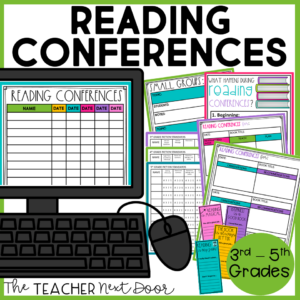
Now that you have a handle on how to make the most of independent reading time, maybe you’d like to plan-out Reading Workshop for the year?
If you’d like to plan out the grade level reading skills and mini-lessons your students need for the year, I have a FREE set of pacing guides for 3rd, 4th, and 5th grades that I’d love to share with you.
The pacing guides are organized by weeks and come in color, black and white, and in editable formats too, so you can tweak them to match your needs.
IF YOU LIKED THIS BLOG, YOU MAY ALSO BE INTERESTED IN:


